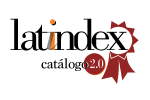Quality of life in mestizos and indigenous older adults from Nabon. 2017
DOI:
https://doi.org/10.18537/RFCM.38.03.06Keywords:
aged, quality of life, ethnic groups, activities of daily livingAbstract
According to the WHO, the population in 2015 was 1.100 million people over 60 years of age and it will increase by 2.050 to 2.000 million, so it is important to know the quality of life and its functionality at this age.
Objective: to determine the quality of life of indigenous and mestizos older adults in the Nabón canton.
Methodology: this is a descriptive crosssectional study, with a universe of 777 older adults, the sample was obtained by conglomerates with Fisher's formula of: 150 indigenous and 224 mestizos, to whom the questionnaires were applied: WHOQOL-BREF and the Katz index to assess functionality and thus thoroughly assess the quality of life. The surveys were carried out voluntarily to a group of older adults, who authorized to participate in the project by signing the informed consent. The collected data were analyzed, tabulated and presented as frequencies or percentages in tables and graphs with SPSS. The statistical analysis was multivariate.
Results: A total of 374 older adults between 65 and 97 years old participated, with an average age of 77.77 years, predominantly female (53.7%). The quality of life in general was normal (58.3%). Functionally, a 11.5% is dependent according to the Katz index and of these, the most vulnerable population in the present study is the indigenous.
Conclusions: the majority of the population studied considered their quality of life as normal. There is also a directly proportional relationship between the degree of functional independence and quality of life, being more noticeable in the mestizo ethnic group
Downloads

Published
Issue
Section
License
Copyright (c) 2021 Zoila Elizabeth Verdugo Carrión, Marco Andrés Rodríguez Astudillo

This work is licensed under a Creative Commons Attribution-NonCommercial-ShareAlike 4.0 International License.
Copyright © Autors.

You are free to:
 |
Share — copy and redistribute the material in any medium or format |
 |
Adapt — remix, transform, and build upon the material for any purpose, even commercially. |
Under the following conditions:
 |
Attribution — You must give appropriate credit, provide a link to the licence, and indicate if changes were made. You may do so in any reasonable manner, but not in any way that suggests the licenser endorses you or your use. |
| NonCommercial — You may not use the material for commercial purposes. | |
| ShareAlike — If you remix, transform, or build upon the material, you must distribute your contributions under the same license as the original. |
| No additional restrictions — You may not apply legal terms or technological measures that legally restrict others from doing anything the licence permits. |





